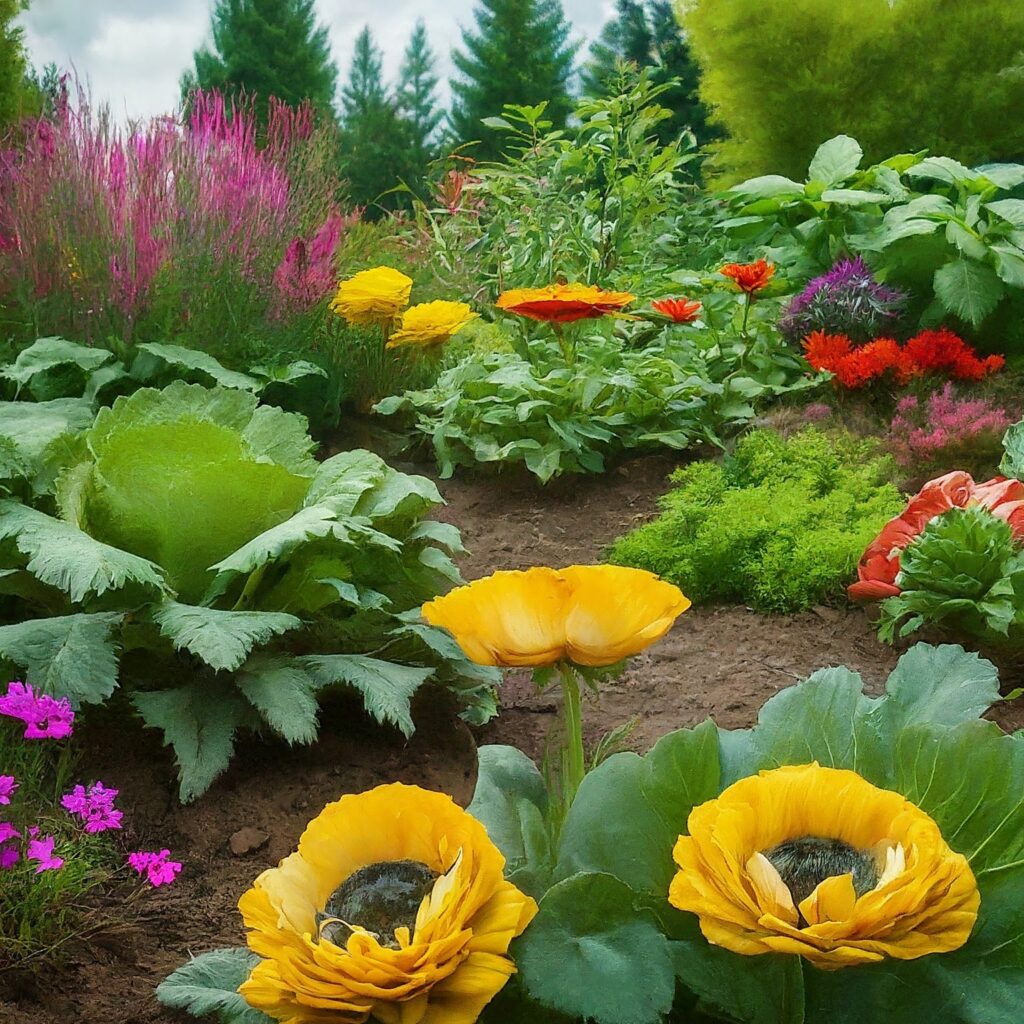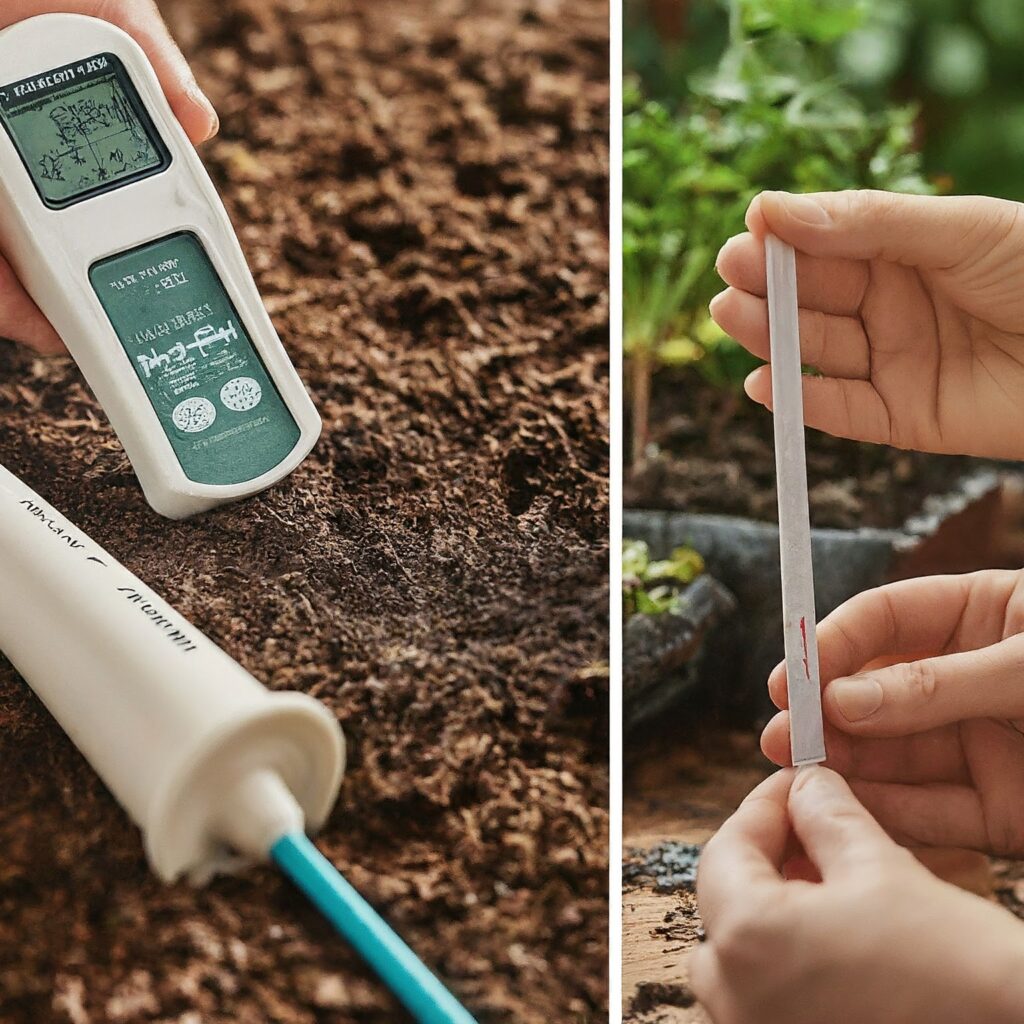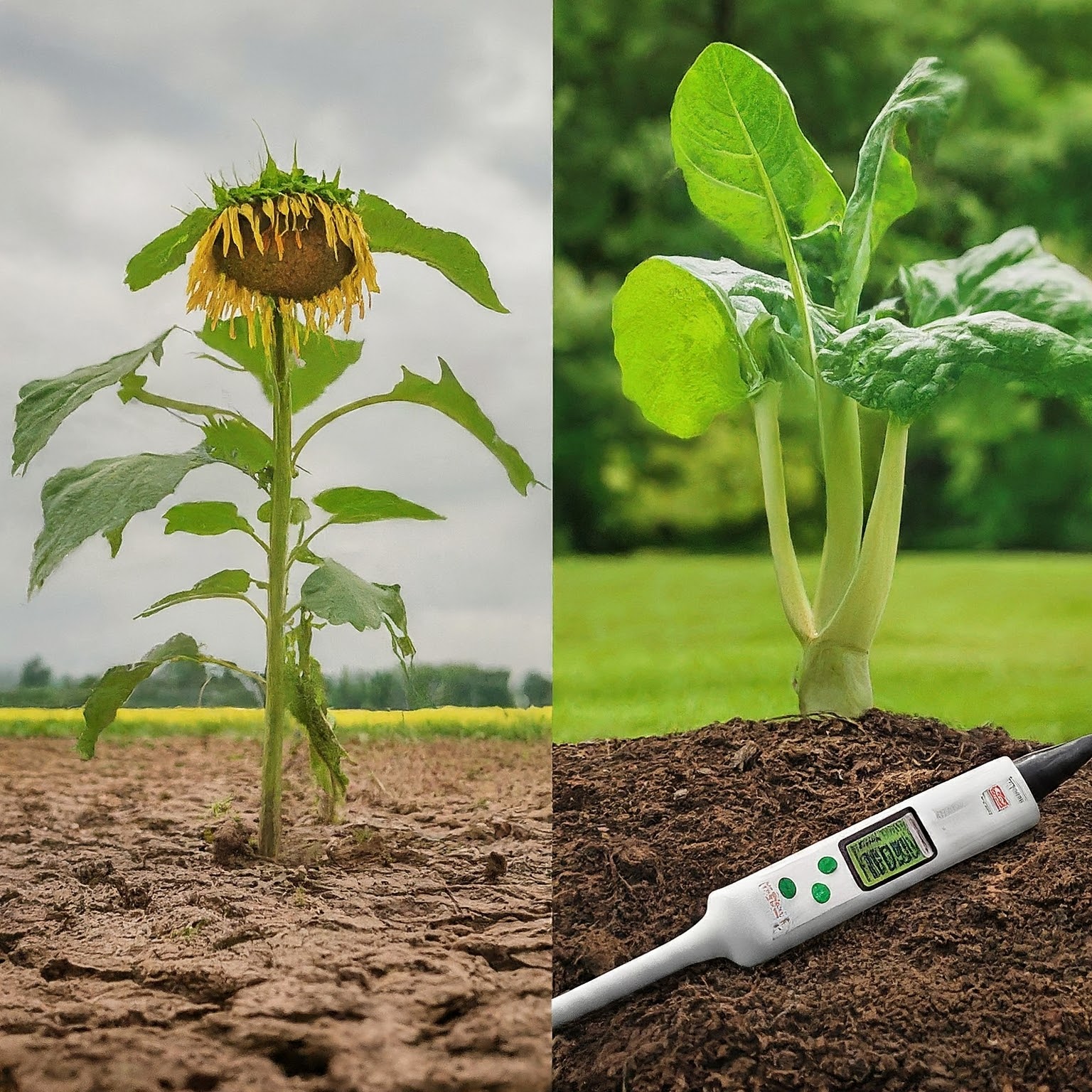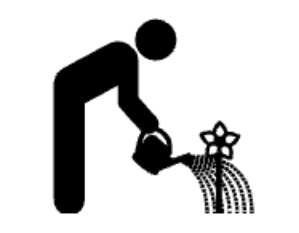Did you know that there’s a secret to why some plants flourish in your garden while others mysteriously struggle? The answer lies beneath the surface, in soil chemistry.
One of the vital aspects of soil chemistry is soil pH. In fact, understanding soil pH is like having a cheat code for your garden!
But, “What is soil pH?” and “Why does it matter?”
In this beginner’s guide, we’ll break down everything you need to know about soil pH, from what it is and why it matters to how to test your soil and adjust it for happy, thriving plants.
Jump to a section:
Soil pH Quick Facts
- Soil pH measures how acidic or alkaline your soil is.
- It ranges from 0 to 14, with 7 being neutral.
- Most garden plants prefer a slightly acidic to neutral pH (around 6.0 to 7.0).
- The acidity or alkalinity of your soil (called pH) can change how much food plants can eat (nutrients) and how busy the tiny helpers in the soil (microbes) are.
- Regular testing is crucial to maintaining the right balance.
What is Soil pH?

So, what is soil pH?
As stated above, soil pH measures how acidic or alkaline your soil is.
Think of a dimmer switch. 0 pH is all the way off (super acidic), 14 is all the way on (really alkaline), and 7 is the perfect halfway point (neutral). Numbers below 7 indicate acidic soil, while numbers above 7 indicate alkaline soil.
Think of it like this: your soil’s pH is like the Goldilocks of gardening—it needs to be just right for your plants to thrive.
The Science Behind Soil pH
The pH scale actually measures the concentration of hydrogen ions in the soil.
More hydrogen ions mean higher acidity (lower pH), while fewer hydrogen ions indicate alkalinity (higher pH).
The logarithmic nature of the pH scale means that each whole number change represents a tenfold difference in acidity or alkalinity.
For example, a soil pH of 6.0 is ten times more acidic than a soil pH of 7.0.
Soil pH and Plant Growth
Different plants have different soil pH preferences.
For example, blueberries love acidic soil with a pH of 4.5 to 5.5, while most vegetables prefer a slightly acidic to neutral pH of 6.0 to 7.0.
Knowing the preferred pH range of your plants can help you tailor your soil conditions to their needs, leading to healthier, more productive plants.
Importance of Soil pH in Gardening

So, why soil pH is such a big deal, you ask?
Here’s the scoop: the pH of your soil directly affects how well your plants can absorb nutrients.
If your soil is too acidic or too alkaline, certain nutrients become unavailable to your plants, even if they’re present in the soil. This can lead to nutrient deficiencies, poor plant growth, and even plant death.
Simply put, understanding and managing your soil pH can be the difference between a flourishing garden and a failing one.
Nutrient Availability
Plants require various nutrients for growth, including nitrogen, phosphorus, potassium, calcium, and magnesium. Your soil pH plays a role in determining the availability of these nutrients to your plants.
For example, in highly acidic soils, phosphorus becomes less available, while in highly alkaline soils, iron and manganese become less available.
Ensuring the right soil pH helps maintain optimal nutrient availability for your plants.
Microbial Activity
Soil microorganisms, such as bacteria and fungi, play a crucial role in breaking down organic matter and making nutrients available to plants.
These microorganisms have pH preferences, too. Most beneficial soil microbes thrive in slightly acidic to neutral soils.
This means when you maintain an appropriate soil pH, you actually create a hospitable environment for these essential microorganisms.
Factors Affecting Soil pH

There are many different factors that can influence the soil pH in your garden. Knowing these can help you understand and manage changes more effectively:
Soil Composition
First, the types of minerals and organic matter in your soil can affect its pH.
For example, soils rich in limestone tend to be more alkaline due to the presence of calcium carbonate.
Conversely, soils high in organic matter, like peat, can be more acidic.
Rainfall
Second, frequent rainfall can leach away alkaline elements, making the soil more acidic over time. This is particularly common in regions with high rainfall, where the soil tends to be naturally more acidic.
On the other hand, arid regions often have more alkaline soils due to lower leaching rates.
Fertilizers
Certain fertilizers can also alter soil pH.
Ammonium-based fertilizers, for instance, can lower pH, making the soil more acidic as they undergo nitrification.
Conversely, nitrate-based fertilizers can increase pH slightly.
It’s important to choose fertilizers that align with your soil pH goals.
Plant Activity
Even plants themselves can affect soil pH.
For example, decomposing organic matter from plants can release acids that lower soil pH.
Additionally, the root activity of certain plants can alter pH levels in the rhizosphere (the soil region near plant roots).
Why Monitor Your Soil pH?
As a gardener, you need to keep an eye on your soil pH from time to time.
Why?
Well, regularly checking your soil pH is like giving your garden a health check-up. It helps you catch potential problems early and take corrective action before your plants suffer.
Monitoring your soil pH ensures your plants have the right environment to absorb nutrients efficiently. Plus, it can save you money in the long run by preventing the overuse of unnecessary fertilizers and soil amendments.
Preventing Plant Stress
Maintaining the appropriate soil pH helps reduce the risk of nutrient deficiencies and toxicities.
This means your plants are less likely to experience stress, which can lead to better growth, higher yields, and fewer pest and disease problems.
Maximizing Fertilizer Efficiency
When your soil pH is in the optimal range for your plants, the nutrients in your fertilizers are more readily available. This means you get the most out of your fertilizers, leading to cost savings and more sustainable gardening practices.
Supporting Soil Health
Regular pH monitoring helps you maintain a balanced soil environment that supports diverse microbial activity. Healthy soil is the foundation of a thriving garden, and keeping an eye on your soil pH is a key part of soil health management.
How to Test Soil pH

Now, for the most important part: how to test soil pH?
There are several methods you can use to check your soil pH, including the following:
1. Soil pH Test Kits
Soil pH kits are readily available at garden centers and are pretty user-friendly. They typically come with test tubes, a testing solution, and a color chart.
Here’s how to test soil pH using a test kit:
- Use a clean trowel to collect soil from different areas of your garden. Mix these samples to get a representative sample.
- Fill the test tube with the soil sample to the indicated level.
- Follow the instructions on the kit to add the appropriate amount of testing solution to the soil sample in the test tube.
- Shake the test tube thoroughly and then let it sit for the recommended time to allow the reaction to occur.
- Match the color of the solution to the pH color chart included in the kit to determine your soil’s pH.
2. Soil pH Meter
The second method to test your soil pH involves using a soil pH meter.
A soil pH meter is a handy tool that gives you instant readings. It’s a small device with probes that you insert into the soil.
Here’s how to use a soil pH meter:
- Push the probes into the soil at various points in your garden to get a comprehensive reading.
- The meter will display the pH reading within seconds.
- Rinse and dry the probes after each use to ensure accurate readings in the future.
Check out this video on how to check the pH of your garden soil:
3. Professional Lab Testing
For the most accurate results, you can send a soil sample to a professional lab. They’ll provide a detailed analysis of your soil’s pH and nutrient levels.
While this method is more expensive, it gives you comprehensive and more accurate information that can guide your gardening decisions.
- Follow the lab’s instructions for collecting and packaging your soil sample.
- Mail your sample to the lab for analysis.
- The lab will send you a detailed report on your soil’s pH and nutrient levels, along with recommendations for amendments if needed.
How to Change or Adjust Soil pH
Once you’ve figured out your soil’s pH, you might need to adjust it to suit your plants.
Here’s how to lower soil pH and how to increase soil pH:
How to Lower Soil pH
If you find out that your soil is too alkaline, you should make it more acidic.
Here are some methods for how to lower soil pH:
- Add Sulfur: Elemental sulfur is a common amendment used to lower soil pH. It’s slow-acting but effective. Use about 1-2 pounds of sulfur per 100 square feet to lower pH by one unit. Mix it thoroughly into the soil and water well.
- Incorporate Organic Matter: Adding compost, pine needles, or peat moss can help acidify the soil. Organic matter breaks down over time, releasing acids that lower pH. Apply a 2-3 inch layer and work it into the top 6-8 inches of soil.
- Use Acidic Fertilizers: Fertilizers that contain ammonium sulfate or urea can lower soil pH. These fertilizers release hydrogen ions into the soil as they break down, which increases acidity. Apply according to package instructions and avoid over-fertilization, which can harm plants and soil health.
- Plant Acid-Loving Plants: Grow plants that thrive in acidic conditions, like blueberries, rhododendrons, and azaleas. These plants naturally help lower soil pH over time. Their organic matter contribution and root activity promote a more acidic environment.
How to Increase Soil pH
For soils that are too acidic, you’ll want to raise the pH.
Here’s how to increase soil pH:
- Add Lime: Agricultural lime (calcium carbonate) is the most common amendment for raising soil pH. It’s effective and widely available. Use about 5 pounds per 100 square feet to raise pH by one unit. Thoroughly mix the amendment into your soil, making sure it’s evenly distributed. Then, water generously until the soil is soaked through.
- Use Wood Ashes: Wood ashes can help raise pH, but use them sparingly as they can also add salts to the soil. Apply no more than 20 pounds per 1,000 square feet per year and incorporate them well into the soil.
- Apply Dolomitic Lime: Dolomitic lime not only raises pH but also adds magnesium to the soil, an essential nutrient for your plants. It is especially beneficial if your soil tests indicate a magnesium deficiency.
Here’s a video on how to increase or decrease your soil pH:
How to Balance Soil pH
Maintaining a balanced soil pH is an ongoing process. Regular testing and adjustments are key.
Here are some tips for how to balance soil pH:
- Test Regularly: Check your soil pH at least once a year, preferably in the spring before planting. If you’re making significant amendments, consider testing again in the fall.
- Adjust Gradually: Make small adjustments over time rather than large changes all at once. This helps avoid shocking your plants and allows the soil to stabilize naturally.
- Monitor Plant Health: Pay attention to your plants. Yellowing leaves, stunted growth, or poor flowering can be signs of pH imbalance. Use these symptoms as clues to check and adjust your soil pH.
- Maintain Organic Matter: Regularly adding compost and other organic matter helps buffer pH changes and promotes a healthy, balanced soil environment.
- Use Mulches: Organic mulches like straw, leaves, or wood chips can help moderate soil pH by slowly decomposing and adding organic acids to the soil.
So, as you can see, soil pH is a crucial part of successful gardening. So, remember to test your soil regularly using a soil pH tester or soil pH meter, and make the necessary adjustments to keep your pH balanced.
Whether you need to learn how to lower soil pH or how to increase soil pH, the right knowledge and tools will help you achieve a flourishing garden.



